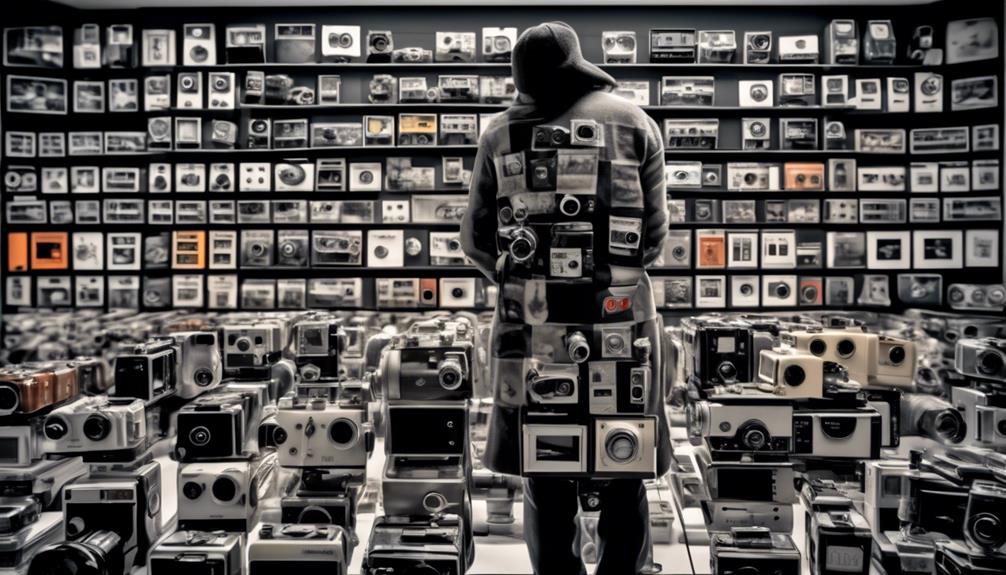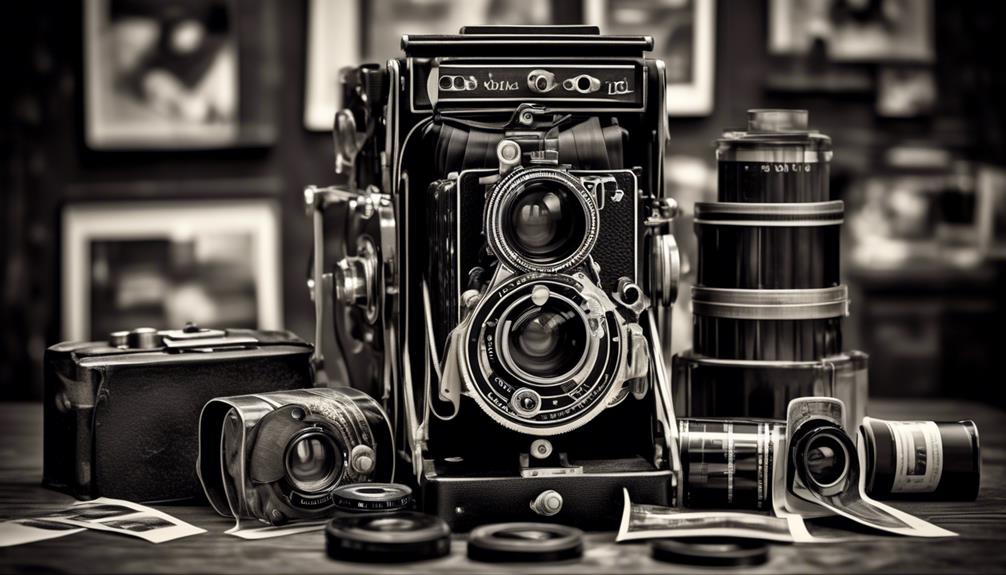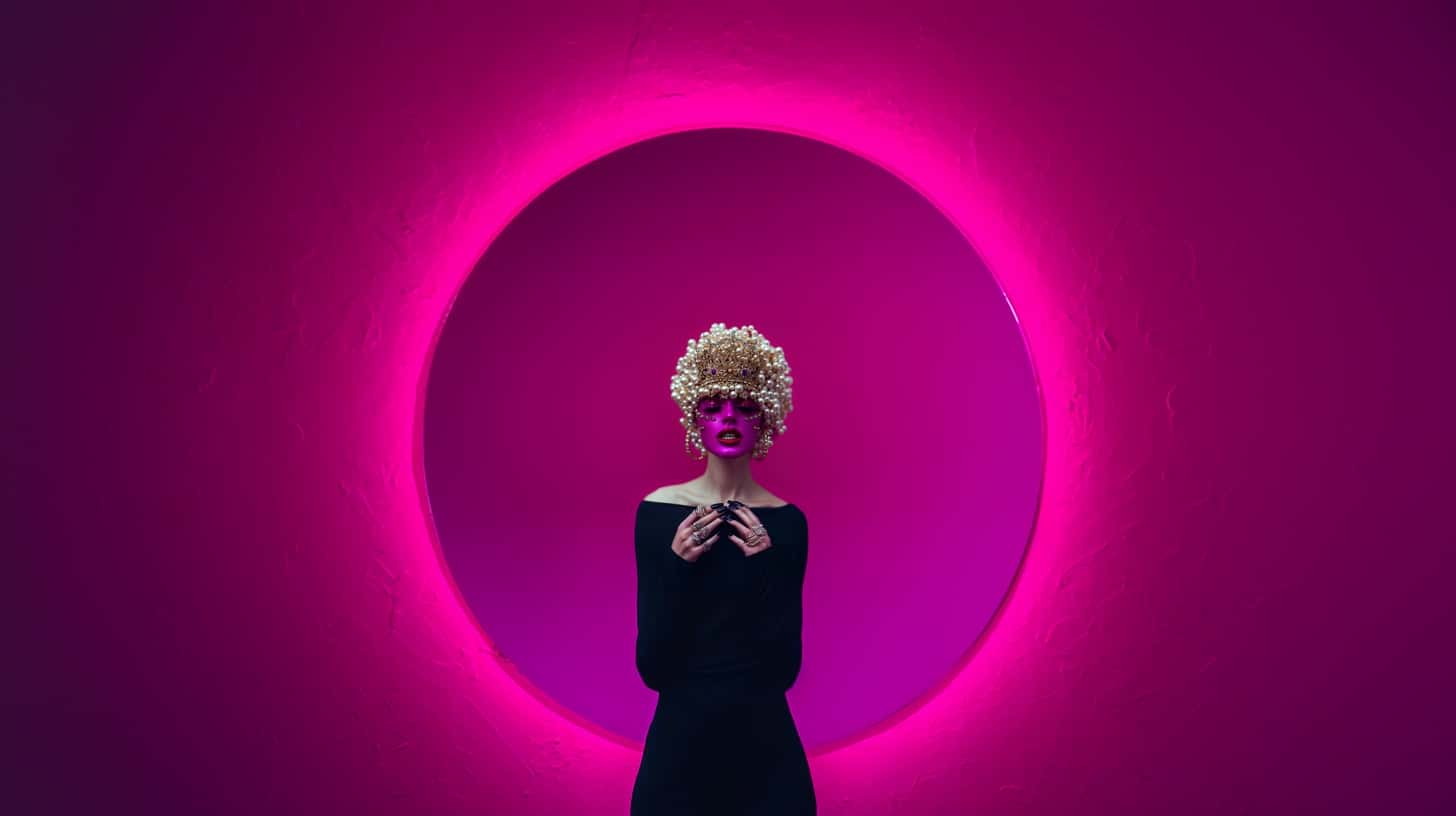Can film cameras use any film? It's a common question among photography enthusiasts, and the answer is not as simple as it may seem. While film cameras offer a sense of nostalgia and artistic expression, the type of film they can use is not universal.
Understanding the intricacies of film formats and compatibility is crucial for capturing quality images. So, what factors should one consider when choosing film for a specific camera?
Join us as we explore the nuances of film compatibility, testing methods, and tips for selecting the right film to unleash the full potential of your film camera.
Key Takeaways
- Film cameras are designed for specific film sizes and formats, so not all film types are compatible with all cameras.
- When choosing film, consider factors such as subject matter, lighting conditions, ISO range, and desired aesthetic effects.
- Test film compatibility by checking camera specifications, film speed range, and physical fit.
- Different photography styles may benefit from specific film options, such as higher ISO films for fast-moving subjects or black and white film for timeless and evocative images.
Understanding Film Formats and Compatibility
When selecting a film for a film camera, it's crucial to consider the specific film size, type, ISO, and compatibility with the camera's format and specifications. Film cameras are designed to use specific film sizes and formats, such as 35mm and 120, and it's essential to ensure that the chosen film matches the camera's format.
The type of film that can be used also depends on the camera's specifications. Some cameras are only compatible with color film, while others can use both color and black and white film. Additionally, the ISO or film speed is a critical factor to consider. The ISO refers to the film's sensitivity to light, and it's important to choose a film with an ISO compatible with the camera's capabilities.
Moreover, understanding the compatibility of different types of film with film cameras is essential. Not all film cameras can use all types of film due to variations in sizes, formats, and specifications. This includes considerations such as the camera's shutter speed and its impact on shooting film. Therefore, when shooting with a film camera, it's imperative to select a film that aligns with the camera's format, type, ISO, and other specifications to ensure optimal results.
Factors to Consider When Choosing Film

Considering various factors such as subject matter, lighting conditions, and desired aesthetic effects is essential when selecting film for use in a film camera. As experienced photographers, we understand the significance of film selection and its impact on the final image. Here are the key factors to consider:
- Subject Matter and Lighting Conditions: The type of subject you intend to capture plays a crucial role in film selection. For instance, black and white films are suitable for capturing fine details and accurate skin tones in portraits. On the other hand, landscape photography benefits from films with a wide dynamic range and finer grains for high-resolution shots.
- ISO Range and Shutter Speeds: When choosing film, the ISO speed is a critical consideration. The ISO determines the film's sensitivity to light, affecting the shutter speeds you can use in different lighting conditions. A general rule is to use higher ISO film for low light situations and lower ISO film for well-lit environments.
- Desired Aesthetic Effects: Consider the aesthetic effects you want to achieve. Different films offer varying color saturation, black and white spectral sensitivity, and special effects. For instance, street photography requires consideration of film speed for capturing city life and architecture details.
These considerations, when carefully weighed, can greatly enhance the quality and impact of your film photography.
Testing Film Compatibility With Your Camera
To ensure successful film photography, it's crucial to test the compatibility of the chosen film with your camera by checking the camera's specifications and considering factors such as film speed range and physical fit.
Film cameras are designed to use specific types of film, so it's essential to match the type of film with the camera's capabilities. When selecting a type of film, it's important to consider the ISO or film speed range of your camera. The ISO indicates the film's sensitivity to light, and it should match the camera's capabilities to ensure proper exposure.
Additionally, it's important to ensure that the physical dimensions of the film are compatible with the camera, including the fit of the film cassettes and the functionality of the advance and frame counter systems. Failure to verify these factors can lead to issues with loading and advancing the roll of film.
Exploring Film Options for Different Photography Styles

Different photography styles require specific film options to achieve the desired aesthetic and visual characteristics. When exploring film options for different photography styles, it's important to consider the following:
- Shutter Speed: For capturing fast-moving subjects or action shots, a film with a higher ISO, such as ISO 400 or above, is worth considering. This ensures that the camera can use faster shutter speeds to freeze motion effectively.
- Medium Format: When aiming for exceptional detail and tonal range, especially in landscape or portrait photography, medium format film offers a good option. The larger negative size provides superior image quality and sharpness.
- B&W Film: If you're looking to create timeless and evocative images, black and white film is the best choice. It offers a different visual language, emphasizing contrast, texture, and form, making it ideal for artistic and expressive photography.
Choosing the best film for different photography styles involves understanding the characteristics of each film type and how they align with specific visual and aesthetic goals. It's important to experiment with various film options to find the ones that best suit your style and creative vision.
Tips for Selecting the Right Film for Your Camera
When selecting the right film for your camera, it's crucial to consider the subject matter and lighting conditions to ensure well-exposed and suitable photographs.
For point-and-shoot film cameras, versatility is key, so a higher ISO film like Ilford Delta would be suitable for various lighting conditions, providing good shadow detail and rendering skin tones well.
On the other hand, for controlled lighting situations, such as in a studio or with landscapes, a lower ISO film like Ilford HP may be preferred to achieve finer grain and more delicate tonal gradations.
When using old film cameras, be mindful of their limitations, particularly regarding shutter speed and compatibility with modern film. Additionally, ensure the camera is light-tight and free from issues like foam deterioration and light leaks.
For those interested in black and white photography, be prepared for the process of developing the film in a dark room.
Ultimately, the right film choice depends on the specific requirements of the photographic project, the technical capabilities of the camera, and the desired aesthetic outcome.
Frequently Asked Questions
Do All Film Cameras Take the Same Film?
Film types, compatibility, sensitivity, brands, formats, expiration, development, characteristics, storage, and quality differ among film cameras.
Not every film camera can take the same film due to format and specification variations.
Understanding these factors ensures optimal film usage and image quality.
Consulting the manual or reputable sources before selecting film is crucial to unleash the creative potential offered by different film types and formats.
Does the Type of Film Matter in a Film Camera?
The type of film matters in a film camera due to its impact on film sensitivity, grain, color accuracy, and low light performance. Different film formats and brands require specific exposure settings and developing processes. Film speed and expiration can affect the outcome. It's crucial to select the right film for the subject and conditions.
Ultimately, the film used significantly influences the final image produced, making it a critical consideration in film photography.
How Do I Know What Film to Use for My Film Camera?
When choosing film for your camera, consider film types, sensitivity, and brands. Ensure the format matches your camera. Check expiration and storage for quality.
Explore development options and exposure techniques to achieve desired results. Understand film grain's impact on image quality. Experiment with shooting techniques for diverse effects.
Knowing the right film enhances your photography, capturing the essence of your subjects in the best possible way.
Can I Use Fujifilm in a Kodak Camera?
Yes, Fujifilm can generally be used in a Kodak camera, as long as it's 35mm film and the camera is in good condition.
Both brands offer various film options, each with different characteristics and sensitivities.
It's crucial to ensure the film speed is compatible with the camera's requirements.
Additionally, the quality and performance of the film can impact the final results.
Lens compatibility and the availability of the specific film type should also be considered.
Conclusion
In conclusion, it's crucial to ensure that the film size and format match the camera for optimal performance.
Did you know that 35mm film, the most commonly used film format, can capture up to 36 exposures per roll? Imagine the possibilities of capturing 36 unique moments with the right film and camera combination.
Remember to always check your camera's specifications and instructions to ensure compatibility with the film you choose.
Happy shooting!










